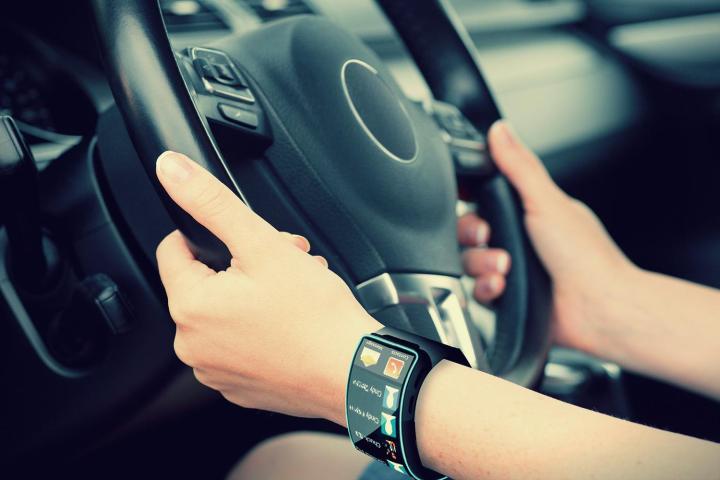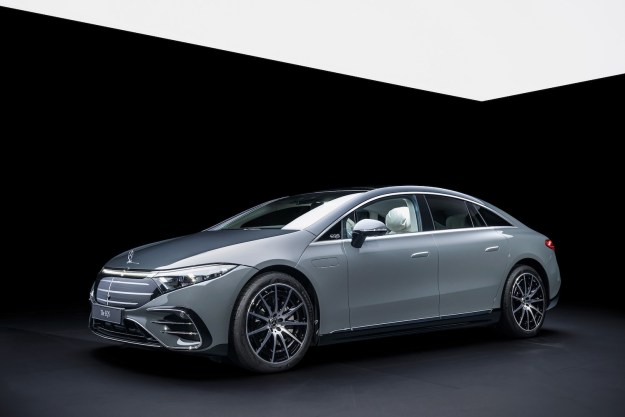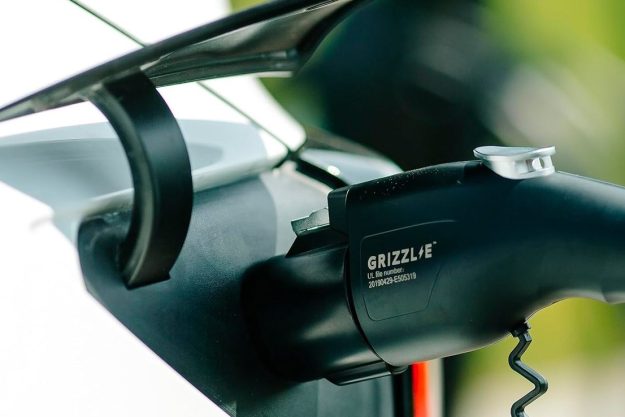
With the launch of Samsung’s Galaxy Gear smartwatch coming next week, everyone’s trying to figure out what Apple’s rival iWatch will look like. Chances are, given that the iPhone was an iPod Touch with a phone, and the iPad was a humongous iPad Touch, the iWatch will be an iPod Touch with a wrist band. So you get music, movies, and apps on your wrist. Whoopee.
A number of existing smartwatches already fill more defined niches. Nike already has a smartwatch focused on exercising, and several companies make smartwatches that are also phones, though they don’t sell very well (likely because most of the folks that thought Dick Tracy’s Wrist Radio was cool are dead).
So why not a smartwatch that focuses on connecting me to my car? I mean, the Tesla S is basically a cool tablet you can drive. Why not put part of that tablet on my wrist where I could really use it?
So much better than a key fob
Think of your key fob. Ever left it in your pants, had it go through the wash, and stop working? That’s typically a very profitable day for your car dealership, because they not only charge a ton for the fob, but charge another ton to get the thing to talk to your car. Most cars have keyless entry today, and evidently, criminals can hack into that without your fob and get into your car. So why can’t you do the same and use your watch instead? You could even have a pin code on the watch tied to something in the car, which would make it harder for criminals to find it. You are less likely to wash or forget your watch, and you’ll have fewer people wondering just how glad you are to see them when they see that huge key fob bulge in your pants. (Really it’s a key fob, I’m not that excited to see you Grandma!)
Wouldn’t it be great if the watch face could point you to your car?
Ever lost a car? This is a ton of fun. You’re tired when you pull into a parking lot late, and then after you see the movie, attend the meeting, or wake up, you walk outside to see a massive multi-story parking structure, with no clue where you left your car. If it’s a rental, you likely have no clue what it was you actually rented, and the keys may only tell you the logo the car has. If you’re in Europe, some of those logos make no sense whatsoever, coupled with not speaking the language, you are screwed. (As you get older you’ll call this a “senior moment,” when you’re younger you call it a “hangover”). Wouldn’t it be great if the watch face could point you to your car?
All charged up
With an electric car, you want to check on things like how the car is charging, whether someone has unplugged your car and plugged in theirs (the technical term for them is “assholes”), or whether there is some other problem that will result in you walking out to an uncharged car at 9 p.m. after a long night “working” and with no ride home. Yes, you can see this on your PC or tablet, but how much better to have your watch alert you, so you can run screaming out of the office to pounce on the “asshole,” or otherwise fix the problem while some people are still awake and willing to help. Electrics also have some neat features you can activate remotely, like cooling the car off before you get in it so your butt doesn’t’ vulcanize to the seats (think Dallas, Texas).
Black box on your wrist

But it would be an interesting way to capture stats and compare results. Car companies could also do things like cobranding the watch. (I already own a Ferrari watch, now I only need to convince my wife to let me buy the matching car that goes with it.)
I want a smartwatch that goes vroom!
While a winning smartwatch will need an outdoor-viewable display like the Qualcomm Mirasol), technology, cool design, and great marketing, I think it could also benefit from some automotive features, branding, and capabilities. I’d kind of love to have a Jaguar watch that roared when I accelerated and purred when I treated the leather seats. The right automotive brand might also impress the ladies.
Granted, it suddenly seems to me like some other watch features, like an industrial-strength vibrating alert feature, might impress them more. Then again, with that feature they might take the watch out and leave me at home.
In an age when folks are already trying to copy the unseen iWatch, maybe some companies would be better going in a different direction and connecting the watch to our cars. What do you think?


